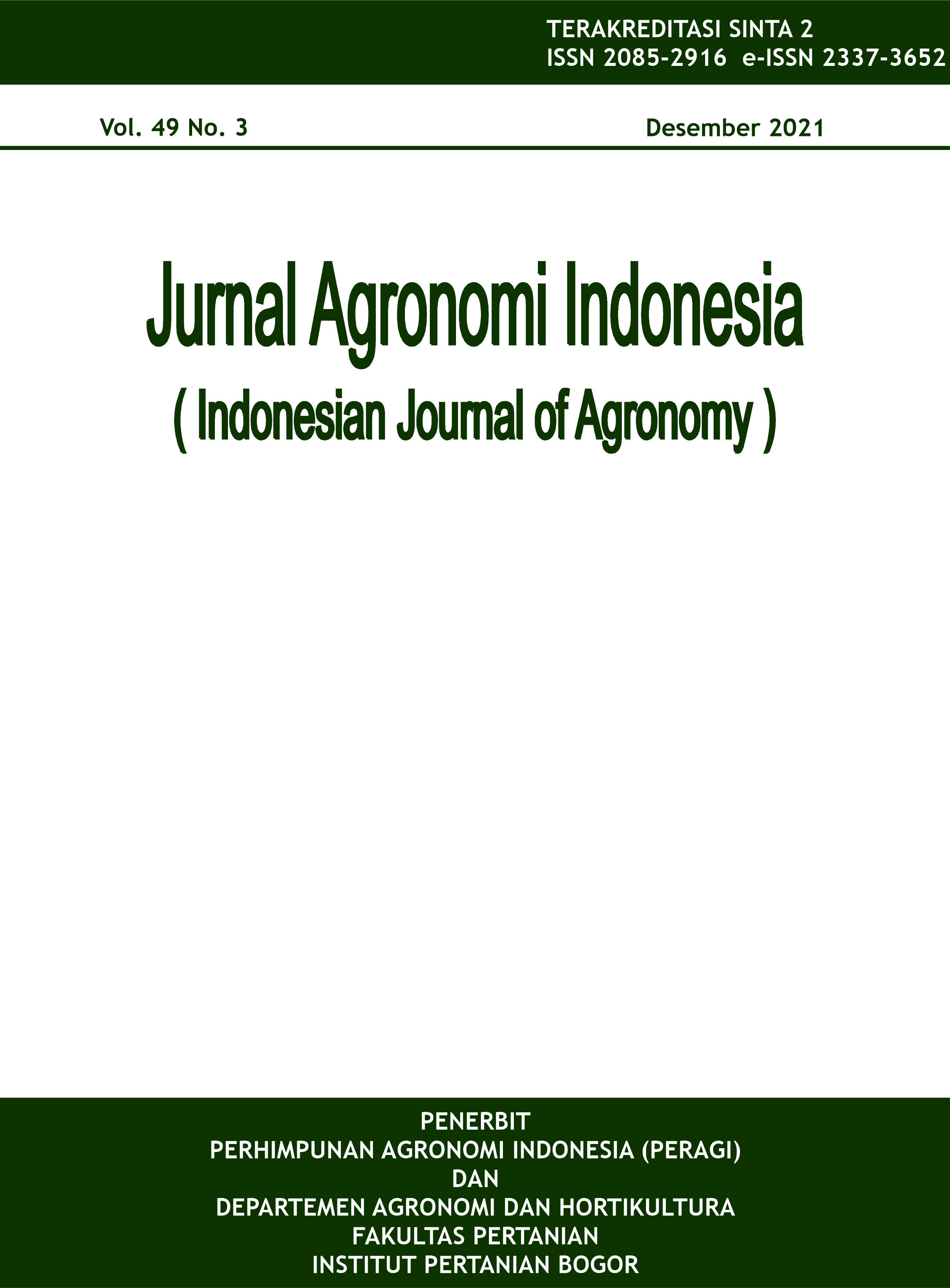Respon Pertumbuhan Tanaman Kedelai (Glycine max) terhadap Amelioran di Lahan Salin
Abstract
The application of ameliorant material and the use of varieties that are tolerant to salinity stress are one of the cultivation technologies that can increase the growth and yield of soybeans on saline soils. The purpose of this study was to determine the best type of ameliorant and variety and their interaction to increase the growth and yield of soybean plants on saline soil. The research was conducted on Jl. Budi Utomo, Pontianak City starting from 31 October 2020 to 20 January 2021. The experimental design used a completely randomized factorial design. The first factor is the type of ameliorant with 4 levels (without ameliorant, gypsum, humic acid, and cow manure). The second factor is various soybean varieties with 3 levels (Anjasmoro, Argomulyo, and Grobogan varieties). Variables observed consisted of plant height at 1, 2, 3, 4, 5, and 6 WAP (weeks after planting), leaf chlorophyll content (leaf greenness), plant toxicity level, number of pods per plant, and salt content. The results showed that cow manure could increase plant growth and yield better than other ameliorants. The Anjasmoro variety gave the highest number of pods compared to Argomulyo and Grobogan on ameliorant manure, and without ameliorant Argomulyo gave the highest number of pods.
Keywords: anjasmoro, chlorosis, gypsum, variety













